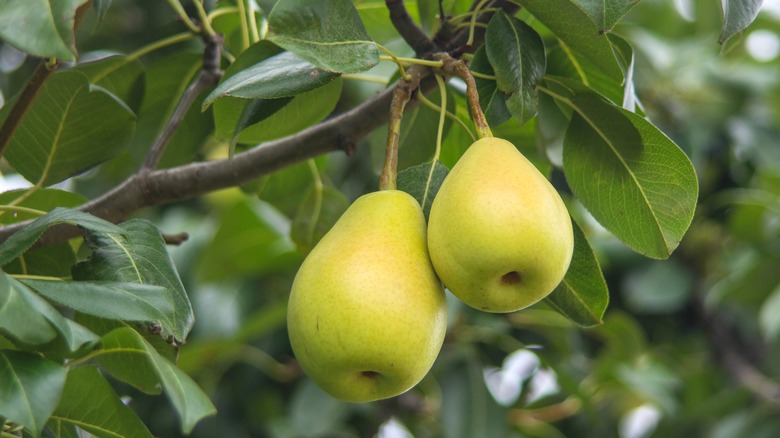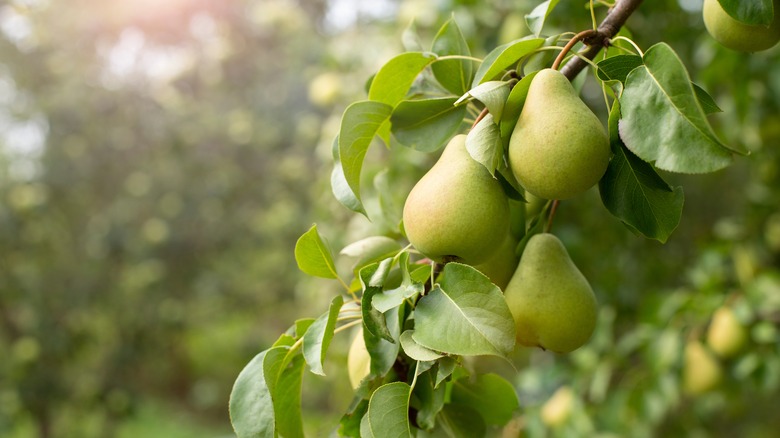The Celebrated Pear That's Been Lost To History
It is said that people don't know a good thing until it's gone, which is true of many now-extinct species. The idea of extinction is likely no new concept for you. Creatures that may come to mind are the dodo bird, passenger pigeons, dinosaurs, or wooly mammoths; but what about, say, a fruit or a vegetable?
Take the old Cornish cauliflower, for example. Though it wasn't necessarily praised for its delicious taste or its stunning appearance, it became a widespread crop due to its ability to withstand a plant virus known as ringspot, according to Mental Floss. But by the 1950s, it had all but disappeared, perhaps without many people realizing, as it was replaced by a French variety of cauliflower by most European farmers. There was also the Taliaferro apple which was none other than Thomas Jefferson's personal favorite, so much so that he cultivated the fruit at his personal estate — but alas, it was also lost to time, according to The Daily Press.
Another incredibly popular fruit — one highly esteemed for its unique taste — to reach extinction was none other than the Ansault pear.
The Ansault pear's lasting legacy
The Ansault was first cultivated in a French nursery and the earliest record of it bearing fruit was in 1863. The fruit was delectable according to the Michigan Quarterly Review, and considered the highest quality of pears one could hope to obtain. Larger in size, but similar in shape and color to a common yellow-green pear, the fruit was best described as having a "buttery" flavor and delightfully soft texture, according to Mental Floss.
You may be wondering how something so renowned, so marvelously tasty, could simply vanish from existence. Due to the irregularly shaped nature of the Ansault trees, they were deemed unfit for commercial orchard use, which the world seemed to be migrating towards anyway, and thus people stopped growing or propagating the tree. By the beginning of the 20th century, it was no more, according to The Toronto Star. There may, however, be hope for the Ansault pear, as several modern horticulturists have made it a goal and a passion to rediscover or reinvent the tree, per The Daily Press.

